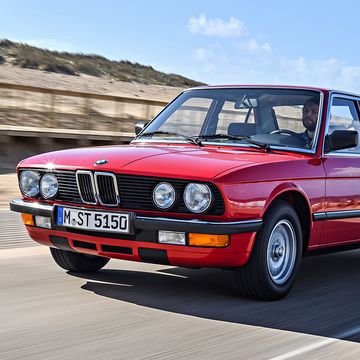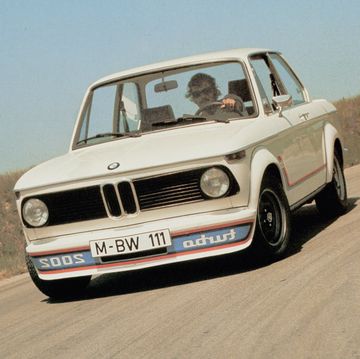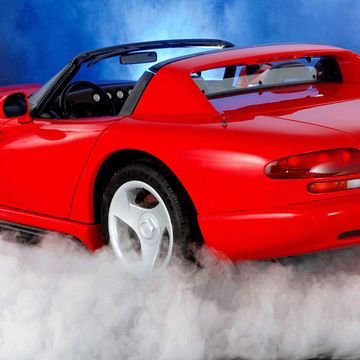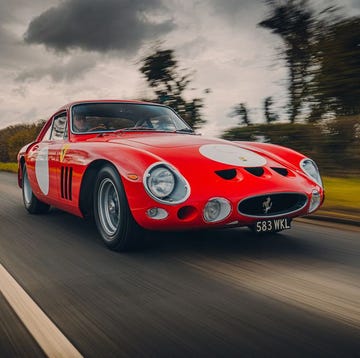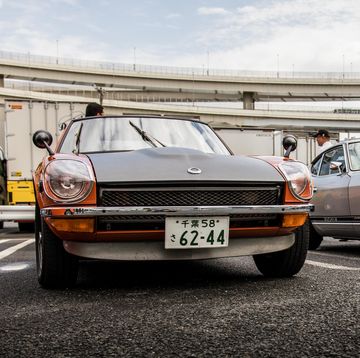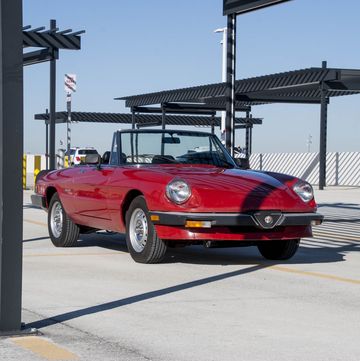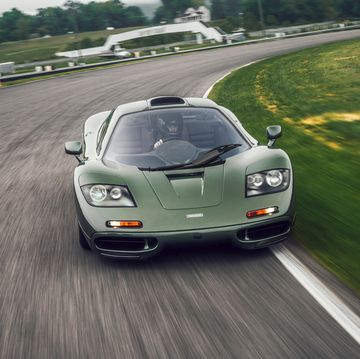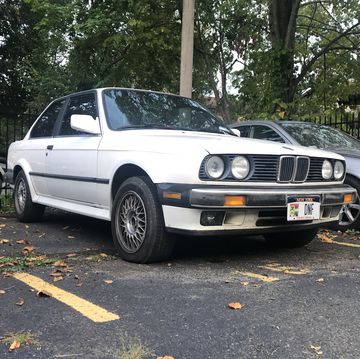When the Lamborghini Miura debuted in 1966, it shocked the car world with its radical mid-engine chassis and gorgeous styling. It had the performance to show for it, too, but it wasn't without its faults. And the effort to fix the Miura's shortcomings helped create this—the Miura SVR, perhaps the wildest early Lamborghini ever built.
Though the Miura's graceful curves look like they'd help the car flow through the air with ease, the opposite was true. The Miura became notorious for generating significant front-end lift at high speeds. Making matters worse, the fuel tank was located just behind the front axle, meaning the nose would get even lighter as fuel levels decreased.
Lamborghini engineers were well aware of the Miura's dynamic shortcomings, addressing them with a series of improved models culminating in the Miura SV of 1971. But Lamborghini chief test driver Bob Wallace wanted something even racier, so he began working on his own variant, the Jota, in 1970. Wallace spoke with Hemmings about the car back in 2008:
"I had nothing else to do on a Saturday or a Sunday anyway, and you had a whole factory to play around with, let's build a lighter car. To show it could be done. Have some sort of a mobile test bed for new ideas or trying something different, that sort of thing."
Thanks to extensive use of various aluminum alloys, the Miura Jota was much lighter than the standard car, and a high-compression, dry-sump V12 provided well over 400 horsepower. Ultra-wide wheels and tires were installed, too, and Wallace reworked the Miura's suspension heavily. To combat the Miura's pronounced front-end lift, Wallace installed an aggressive chin spoiler on the front of the Jota, along with twin fuel tanks mounted in the door sills for better balance.
Those fuel tanks ended up being the downfall of the Jota. It was sold in 1972 and crashed not long after, burning down in spectacular fashion. Still, the Jota was striking enough that Lamborghini customers asked for similar modifications on their Miuras. This led to the Miura SVJ, a special edition built in small numbers during the Miura's production run. It wasn't quite as extreme as Wallace's Jota, but with an upgraded engine, aluminum bodywork and reworked aerodynamics, it was still racier than the standard car.
One customer wanted something even more extreme. Lamborghini Miura chassis #3781 was, at first, fairly unremarkable by Miura standards. It left the factory in 1968 as a light green Miura S, ending up in the hands of German owner Heinz Steber a few years later. With Steber, this car morphed far beyond its factory existence. Via email, Steber explained to me how he crashed the Miura on the way to the Lamborghini factory for a service in the winter of 1974, causing minor front-end damage. Afterwards, Steber decided to ask Lamborghini to turn his car into something resembling the famous Miura Jota.
As Miura production had ended the year before, Lamborghini told Steber it wasn't possible for his car to be converted to Jota specs. He wouldn't take no for an answer, however, and went about sourcing the parts needed himself. Steber showed up at the Lamborghini factory in February 1975 wielding a set of brakes from a Porsche 917, Koni suspension components, massive three-piece BBS wheels and a ton of other high-performance items. He was also armed with a wish list of what he wanted Lamborghini to build, and a lot of cash.
Eight months later, Lamborghini gave him the car you see here: The Miura Jota SVR, the only one like it in the world. Steber described it to me as being "fantastic," but he didn't own it for long. While he lived and kept the Jota SVR in Germany, he had the car registered in Italy, which didn't go over well with the local German authorities. When Steber tried to register the car where he lived, the TÜV, Germany's car safety agency, declared the vehicle too radical for the street. In 1976, Steber sold the car to Hiromitsu Ito who shipped it to Japan, where the car remained until it turned up for sale in the fall of 2015.
During Ito's ownership, the Miura Jota SVR was immortalized in die-cast form and even in the comic series Circuit Wolf. And now, Lamborghini has restored this one-off Miura to the condition it was in when Steber picked it up from the factory in 1975. Paolo Gabrielli, the head of Lamborghini's in-house restoration department, Polo Storico, detailed the process:
"The full restoration took 19 months and required a different approach to the way we normally work. The original production sheet wasn’t of much help, as we relied mostly on the specifications from the 1974 modifications. The challenge for the Polo Storico team was even more daunting as the car arrived in Sant’Agata in pieces, although the parts were all there, and with considerable modifications. The only variations on the original specifications were the addition of 4-point safety belts, more supportive seats and a removable roll bar. These were expressly requested by the customer and are intended to improve safety during the car’s race track exhibitions."
What's most striking about the Miura Jota SVR is how radical it looks compared to the standard Miura that debuted in 1966. The SVR may be less pure from an aesthetic standpoint, but it rectifies a lot of the original Miura's faults. It's also a remarkable preview of Lamborghini's be-winged, fender-flared Countaches, still a few years away at that point.
And in a way, this is the ultimate Miura. Not the prettiest, but the final evolution from Lamborghini itself, which counts for a lot. We're glad to learn that the owner plans on using it as it deserves to be used.
A car enthusiast since childhood, Chris Perkins is Road & Track's engineering nerd and Porsche apologist. He joined the staff in 2016 and no one has figured out a way to fire him since. He street-parks a Porsche Boxster in Brooklyn, New York, much to the horror of everyone who sees the car, not least the author himself. He also insists he's not a convertible person, despite owning three.






